While power tools understandably receive the lion’s share of attention around here, those witty and wise Pro Tool Reviews editors love to get their hands on new accessories like blades whenever they can. After all, what good is a great saw with a bum blade? Cabinetry, casework, and trim – ya know, the stuff people will see and touch – call for a more refined blade. And that’s just what the Milwaukee Ultra Fine Finish Blades are all about.
Back in February, Milwaukee announced 30 (that’s three-zero) new circular blades from 5-3/8″ to 12″ in diameters and from general purpose to ultra fine finish. All of these blades feature anti-friction coating and laser-cut technology.
You probably already know that fine finish circular saw blades that perform well have a few things in common (besides circularity!) – heat resistance in the form of anti-friction coatings and appropriate tensioning, vibration control in the form of small cuts or separations in the blade, and a tooth pattern with thin kerfs.
It’s not hard to see why – heat can cause a blade to warp slightly, delivering a cut that isn’t true. Vibration can also make a cut inaccurate. A framing tooth pattern with thick kerfs can cause tearout as the blade exits the material. This is especially important because finer finishes are much more often made out of hardwoods (more difficult to cut, generating more heat and vibration). So let’s cut to the chase here and check out Milwaukee’s.
Key Features
Cut From Steel Cloth
The Milwaukee Ultra Fine Finish Blades are cut from 100% sheet steel with lasers. This method is more accurate than other methods like plasma cutting or, on the low-quality end, a stamping process. Perhaps it goes without saying, the more perfectly round a blade, the better. The centrifugal force of an imperfectly round blade will cause wobble/vibration. If you’ve ever driven on an imbalanced tire, you’ll know what I mean. Perfect roundness isn’t even enough – the arbor hole must be perfectly round and perfectly in the center. That’s a lot of perfection to achieve!
ATB Tooth Geometry
A close inspection of the blades’ tooth pattern reveals alternating bevels. This is the aptly named Alternate Top Bevel pattern or ATB. Picture the blade during the cut and hit the slow-motion button: you’ll realize that it takes two teeth to accomplish the full cut. The first tooth clears a lot of the material while the one behind it bats cleanup, completing the smooth finish.
Kerf
To that end, the kerf – or width of cut – is minimized to 0.094-inches for the 10-inch blade and 0.118-inches for the 12-inch. But perhaps more important is the hook, or rake, angle. This is the angle at which the tooth plunges into the wood and is indicative of how aggressively the blade will make the cut.
Standard hooks are around 5° – 15°, although they can be less (even negative) and more aggressive. Milwaukee doesn’t list these angles on these blades, but you can see they are quite slack and appear set up well for fine finishes.
Carbide
Finally, the teeth are cobalt-infused tungsten carbide, not to put too fine a point on it (see what I did there?). This makes the Milwaukee Ultra Fine Finish Blades about as tough a customer as you can get. The hardness should mean that the teeth stay sharp and the cuts stay clean for many jobs to come.
Anti-Friction and Expansion Slots
The blades feature an anti-friction coating resist heat and prevent blade warping and wood burning. This coating is also designed to prevent pitch buildup. What’s pitch? Take a close look at a well-used circular saw blade and you’re sure to find residual glues, resins, and wood dust stuck around the gullets. This is pitch, and it can make a blade underperform.
No matter how much anti-friction design goes into a blade, heat will still be a byproduct of a cut. Thin expansion gaps further ameliorate adverse effects of heat on the blade by allowing expansion and contractions.
Is is time to replace your blade or does it just need a good cleaning?
https://www.protoolreviews.com/news/how-to-clean-a-circular-saw-blade/35949/
Other Notable Features
Both of the Milwaukee Ultra Fine Finish Blades reviewed here are ring tensioned to ensure there’s no blade deformation at speed. They’re suitable for corded and cordless tools alike and engineered to cut softwoods, hardwoods, melamine, MDF, veneered plywoods, paneling, and moldings.
Performance
Making The Cut
Before taking the Milwaukee Ultra Fine Finish Blades out in the field, I cut some test pieces in the shop. I was just anxious to use the blades, but I also wanted to give them a challenge. Tucked back in a corner of the shop is an old miter saw as well as a benchtop table saw. Both saws have seen better days, the Milwaukee blades cut well with them. I headed to the job site with confidence they’d excel with my tuned-up tools.
Pro Tip: Handle all blades with care and especially fine finish blades. The teeth are incredibly sharp and can cut you easily. Your natural reaction may be to drop it and hitting the concrete floor won’t do your blade any favors.
Finishing Fine
These blades work beautifully. There’s a sense of satisfaction when you see a perfectly smooth cut with no tearout. That satisfaction extends to the finished work when trim pieces abut one another with no gaps. I’ve had both Milwaukee Ultra Fine Finish Blades on some finishing jobs and they are smooth as can be. The blades even overcame the imperfections of old saws to produce excellent results. I must say Milwaukee has done an ultra-fine job with these blades.
The Bottom Line
You can get away with inferior blades for framing, but there’s no wiggle room for finish carpentry and fine woodworking. The new line of Milwaukee Ultra Fine Finish Circular Saw Blades hits the bullseye. The blade bodies are laser cut for precise roundness, the ATB tooth pattern and thin kerf produce a beautifully clean cut, the cobalt infused tungsten carbide teeth are incredibly hard and durable, and the anti-friction coating and expansion slots mitigate heat and prevent burning in hardwoods. I have no doubt your trim work and other finished wood products will be better for Milwaukee’s excellent work.
Milwaukee Ultra Fine Finish Blades Features
- A High-ATB tooth pattern provides a superior finish with minimal tearout in the cut material
- Milwaukee’s anti-friction coating keeps the blade cool while cutting and resists corrosion & gumming
- Laser cutting technology from 100% sheet steel increase cutting accuracy
- Cobalt Infused Tungsten Carbide
- Thin Kerf Blade
- Optimized for Both Cordless & Corded Tools
- Blade Tensioning Ring
- Arbor Holes:
- 5/8″ 48-40-1032 (10-inch 80T)
- 1″ 48-40-1228 (12-inch 100T)
- Great for use with: Softwoods, Hardwoods, Melamine, MDF, Veneered Plywoods, Paneling, and Moldings
Milwaukee Ultra Fine Finish Blades Specifications
- Item Numbers
- 48-40-1032 (10″ 80T)
- Diameter: 10″
- Width: 0.094″
- Weight: 1.64 pounds
- Price: $52.04
- 48-40-1032 (10″ 80T)
-
- 48-40-1228 (12″ 100T)
- Diameter: 12″
- Width: 0.118″
- Weight: 3.1 pounds
- Price: $77.89
- 48-40-1228 (12″ 100T)

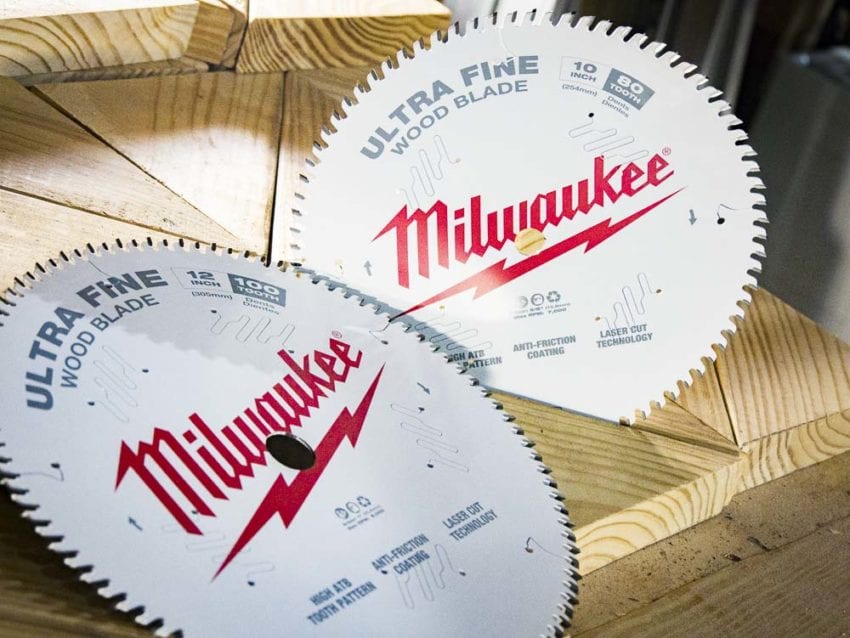
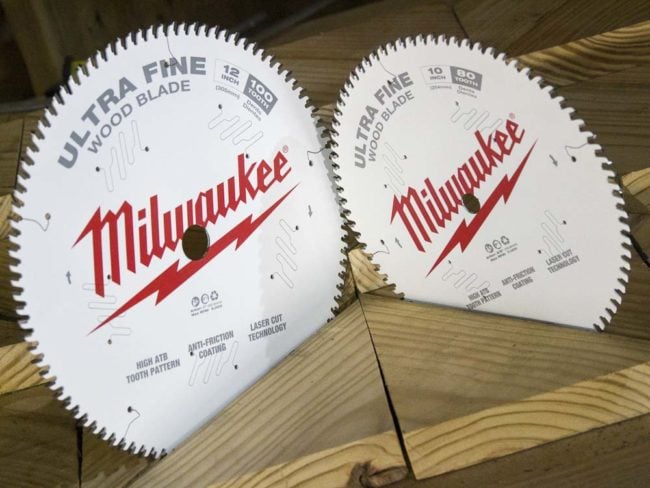
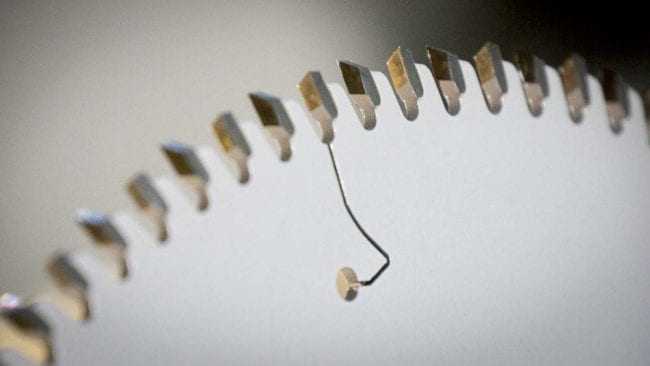
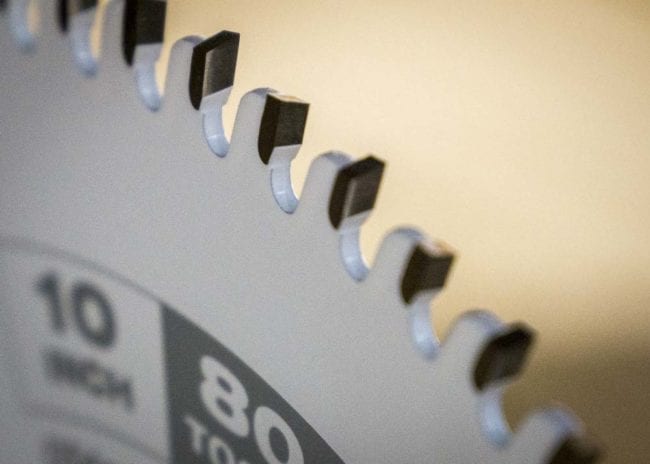
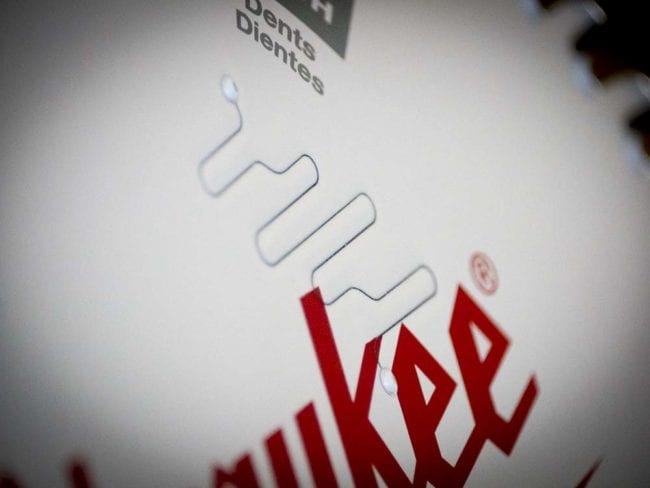
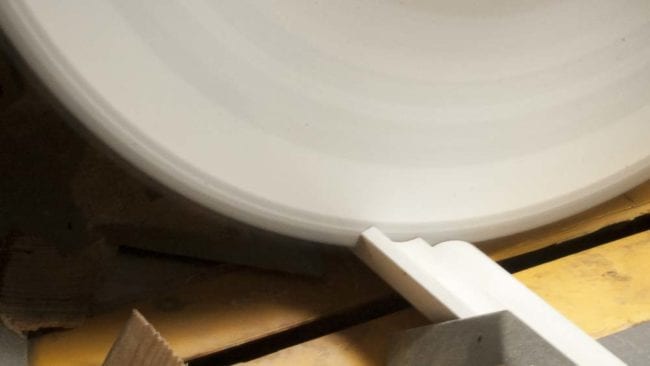
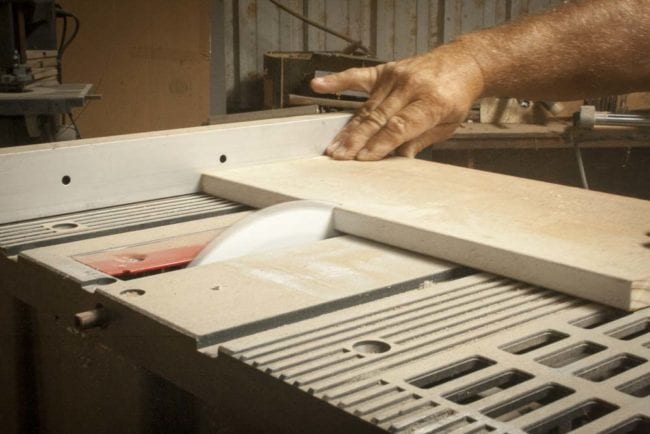
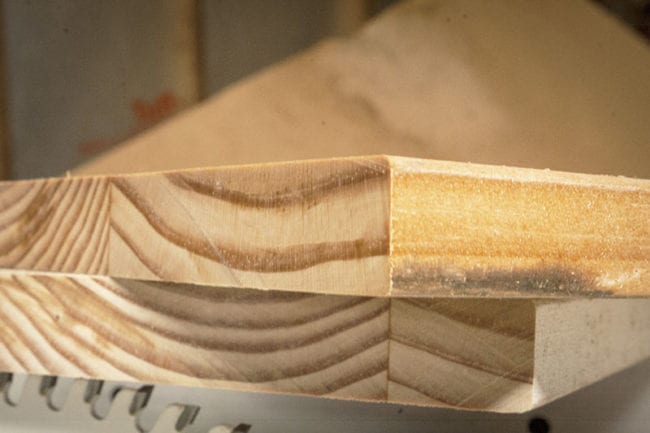



Thank you for the great overview. I appreciate some of this information. It also seems like it’s just restating Milwaukees talking points. You do add alot of information for education purposes. For me, as a tradesman and business owner. I would prefer more in-depth reviews and comparisons. Very rarely have I ever put in a new blade on anything and felt anything but elation. There have been some times… anyway, I just hope to hear in-depth analysis and even things that might annoy manufacturers if it’s the truth. It will only spur them to increase quality. I am somewhat interested… Read more »